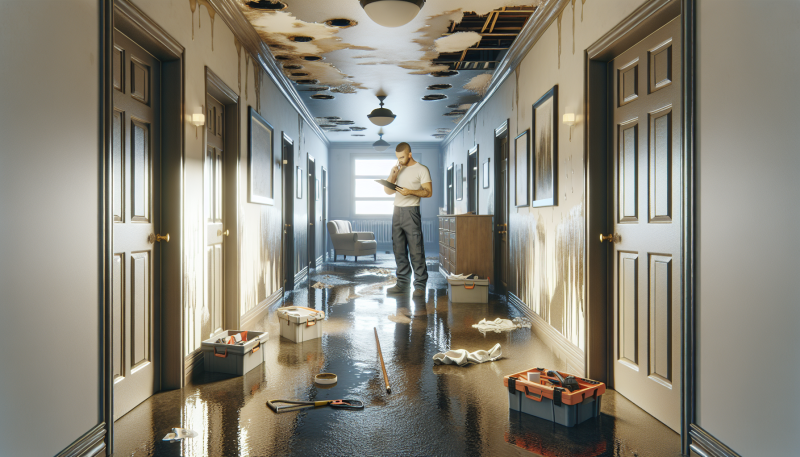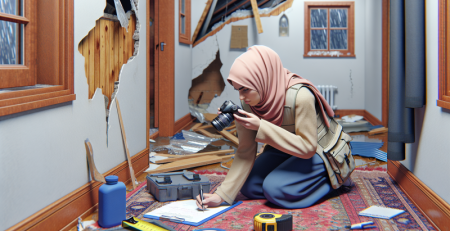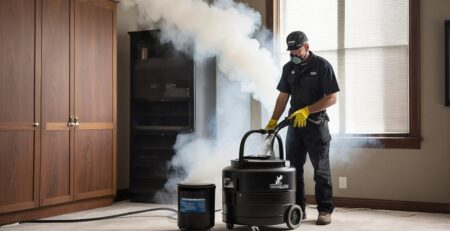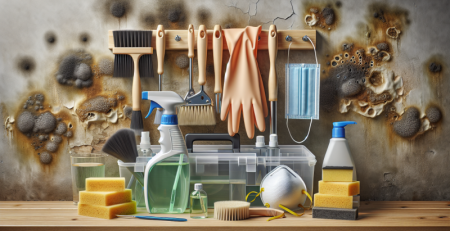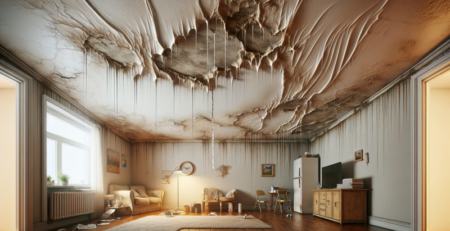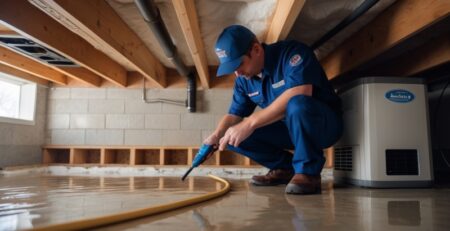How to Handle Water Damage in Multi-Unit Buildings
Water damage in multi-unit buildings can be a nightmare for property managers, tenants, and homeowners alike. Whether it’s a burst pipe, a leaky roof, or flooding from a storm, the aftermath can be overwhelming. But don’t worry! In this guide, we’ll walk you through the steps to effectively handle water damage, ensuring that your property is restored to its former glory. With the right approach, you can minimize damage, prevent mold growth, and ensure the safety of all residents. Let’s dive in!
Understanding the Causes of Water Damage
Before you can effectively tackle water damage, it’s crucial to understand what causes it. Water damage can stem from various sources, and identifying the root cause is the first step in the restoration process. Common causes include:
- Plumbing Issues: Burst pipes, leaking faucets, and malfunctioning toilets can lead to significant water damage. Regular maintenance can help prevent these issues.
- Weather-Related Incidents: Heavy rains, snowmelt, and hurricanes can overwhelm drainage systems and lead to flooding.
- Roof Leaks: A compromised roof can allow water to seep into the building, causing damage to ceilings and walls.
- Appliance Failures: Washing machines, dishwashers, and water heaters can malfunction and leak, leading to localized flooding.
Understanding these causes can help you take preventive measures. For instance, regular inspections of plumbing systems and roofs can save you from costly repairs down the line. If you find yourself facing water damage, it’s essential to act quickly. The longer water sits, the more damage it can cause, including structural issues and mold growth.
Initial Steps to Take After Water Damage Occurs
When water damage strikes, the first thing to do is to ensure the safety of all residents. Here’s a step-by-step approach:
- Evacuate the Area: If the water is significant, evacuate all residents from the affected area. Safety should always be your top priority.
- Turn Off Utilities: If it’s safe to do so, turn off the electricity and gas to prevent further hazards.
- Assess the Damage: Once it’s safe, assess the extent of the damage. Take photos for insurance purposes and document everything.
- Contact Professionals: This is where the expertise of Kraus Restoration comes into play. With their 24/7 emergency services and IICRC certified experts, they can provide the rapid response restoration you need.
It’s important to act quickly. Water damage restoration in New Jersey requires prompt action to mitigate further damage. The longer you wait, the more extensive and costly the repairs will be. Remember, you’re not alone in this; professional restoration services are just a call away.
Documenting the Damage for Insurance Claims
Once you’ve contacted a restoration service, the next step is to document the damage for your insurance claim. This process can be tedious, but it’s essential for ensuring you receive the compensation you deserve. Here’s how to do it:
- Take Photos: Capture clear images of the damage from multiple angles. Include close-ups of any affected areas.
- Make a List: Create a detailed list of damaged items and areas. Include descriptions, estimated values, and any receipts you have.
- Contact Your Insurance Company: Notify them of the damage as soon as possible. Provide them with your documentation and follow their instructions.
Keep in mind that insurance policies can vary widely. Some may cover certain types of water damage while others may not. It’s crucial to read your policy carefully and understand what is covered. If you’re unsure, don’t hesitate to ask your insurance agent for clarification.
Choosing the Right Restoration Company
When it comes to water damage restoration, not all companies are created equal. Choosing the right restoration company can make a significant difference in the outcome of your restoration efforts. Here are some tips to help you select the best:
- Look for Certifications: Ensure the company is IICRC certified. This certification indicates that they adhere to industry standards and best practices.
- Read Reviews: Check online reviews and testimonials. Look for companies with a proven track record in property damage restoration in New Jersey.
- Ask About Their Process: A reputable company should be able to explain their restoration process clearly. They should also offer a detailed estimate before starting work.
- Check for Insurance: Ensure the company is fully insured. This protects you in case of any accidents during the restoration process.
For residents in Central and Northern New Jersey, Kraus Restoration is a trusted name in the industry. With their rapid response and expertise in mold cleanup in New Jersey, they can help you navigate the restoration process smoothly.
Preventing Future Water Damage
Once you’ve dealt with the immediate aftermath of water damage, it’s time to think about prevention. Here are some proactive steps you can take to minimize the risk of future incidents:
- Regular Inspections: Schedule regular inspections of plumbing, roofs, and appliances. Catching issues early can save you from major headaches later.
- Invest in Quality Materials: If you’re renovating or making repairs, invest in high-quality materials that are less prone to leaks and damage.
- Install Water Alarms: Consider installing water alarms in areas prone to flooding. These alarms can alert you to leaks before they become major problems.
- Maintain Gutters and Downspouts: Ensure your gutters and downspouts are clear of debris to prevent water from pooling around your building.
By taking these preventive measures, you can significantly reduce the likelihood of future water damage. Remember, an ounce of prevention is worth a pound of cure!
Dealing with Mold After Water Damage
One of the most significant risks following water damage is mold growth. Mold can start to develop within 24-48 hours of water exposure, making it crucial to address any moisture issues promptly. Here’s how to handle mold cleanup:
- Identify Affected Areas: Look for signs of mold growth, such as discoloration or a musty smell. Common areas include bathrooms, basements, and around windows.
- Contain the Area: If you find mold, contain the area to prevent spores from spreading. Close doors and windows and turn off HVAC systems.
- Contact Professionals: Mold cleanup can be complex and hazardous. It’s best to contact IICRC certified experts who specialize in mold remediation.
Attempting to clean mold yourself can sometimes do more harm than good. Professionals have the right equipment and knowledge to safely remove mold and prevent it from returning. In New Jersey, Kraus Restoration offers comprehensive mold cleanup services, ensuring your property is safe and healthy.
Understanding the Costs of Water Damage Restoration
Water damage restoration can be costly, but understanding the factors that influence these costs can help you budget effectively. Here are some key considerations:
- Extent of Damage: The more extensive the damage, the higher the cost. Minor leaks may only require drying and cleaning, while major flooding could necessitate structural repairs.
- Type of Water: The source of the water can affect costs. Clean water from a broken pipe is less expensive to remediate than contaminated water from a sewage backup.
- Location: Restoration costs can vary by location. In Central and Northern New Jersey, prices may differ based on local market rates.
- Additional Services: If mold remediation or fire damage repair is needed, this will add to the overall cost.
To get a clear picture of potential costs, it’s best to obtain estimates from multiple restoration companies. This will help you understand the market rate and ensure you’re getting a fair price. Remember, investing in professional restoration services can save you money in the long run by preventing further damage.
Conclusion
Handling water damage in multi-unit buildings can be daunting, but with the right knowledge and resources, you can navigate the process effectively. From understanding the causes of water damage to choosing the right restoration company, each step is crucial in ensuring a successful recovery. Remember to act quickly, document everything for insurance purposes, and consider preventive measures to protect your property in the future. If you find yourself in need of assistance, don’t hesitate to reach out to Kraus Restoration, NJ’s leaders in water, mold, and fire damage restoration. They’re here to help you 24/7!
What should I do first when I discover water damage?
The first step is to ensure everyone’s safety. Evacuate the area if necessary, turn off utilities, and assess the damage. Then, contact a professional restoration service like Kraus Restoration for immediate assistance.
How can I prevent mold after water damage?
To prevent mold, act quickly to dry out the affected areas within 24-48 hours. Use dehumidifiers, fans, and ensure proper ventilation. If mold does appear, contact IICRC certified experts for safe removal.
What are the signs of water damage?
Signs of water damage include discoloration on walls or ceilings, peeling paint, a musty smell, and visible mold growth. If you notice any of these signs, it’s essential to investigate further.
How much does water damage restoration cost?
The cost of water damage restoration varies based on the extent of the damage, the type of water involved, and the location. It’s best to get estimates from multiple restoration companies to understand potential costs.
Can I handle water damage cleanup myself?
While minor water issues can sometimes be handled DIY, significant water damage should be addressed by professionals. They have the expertise and equipment to ensure thorough and safe restoration.
